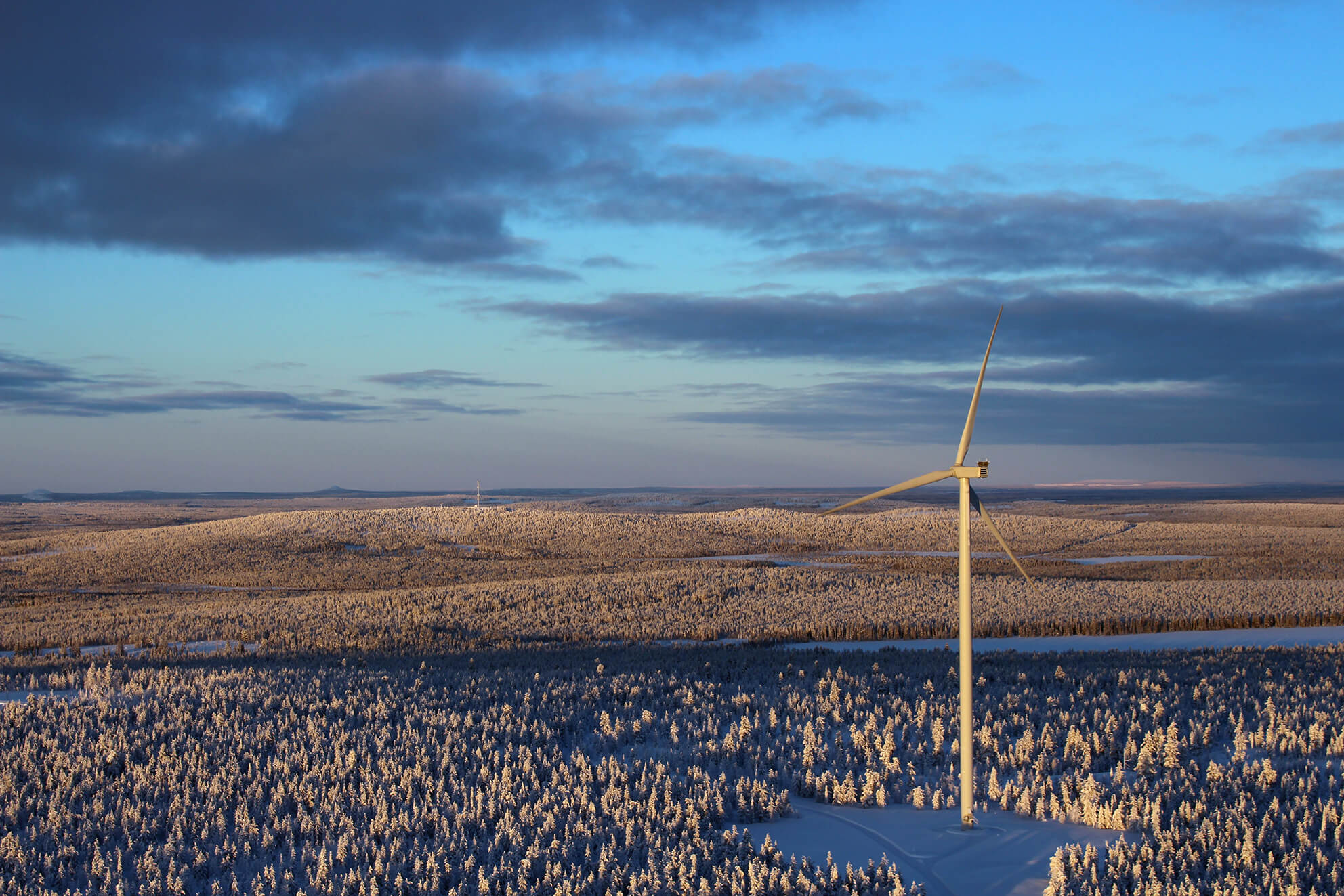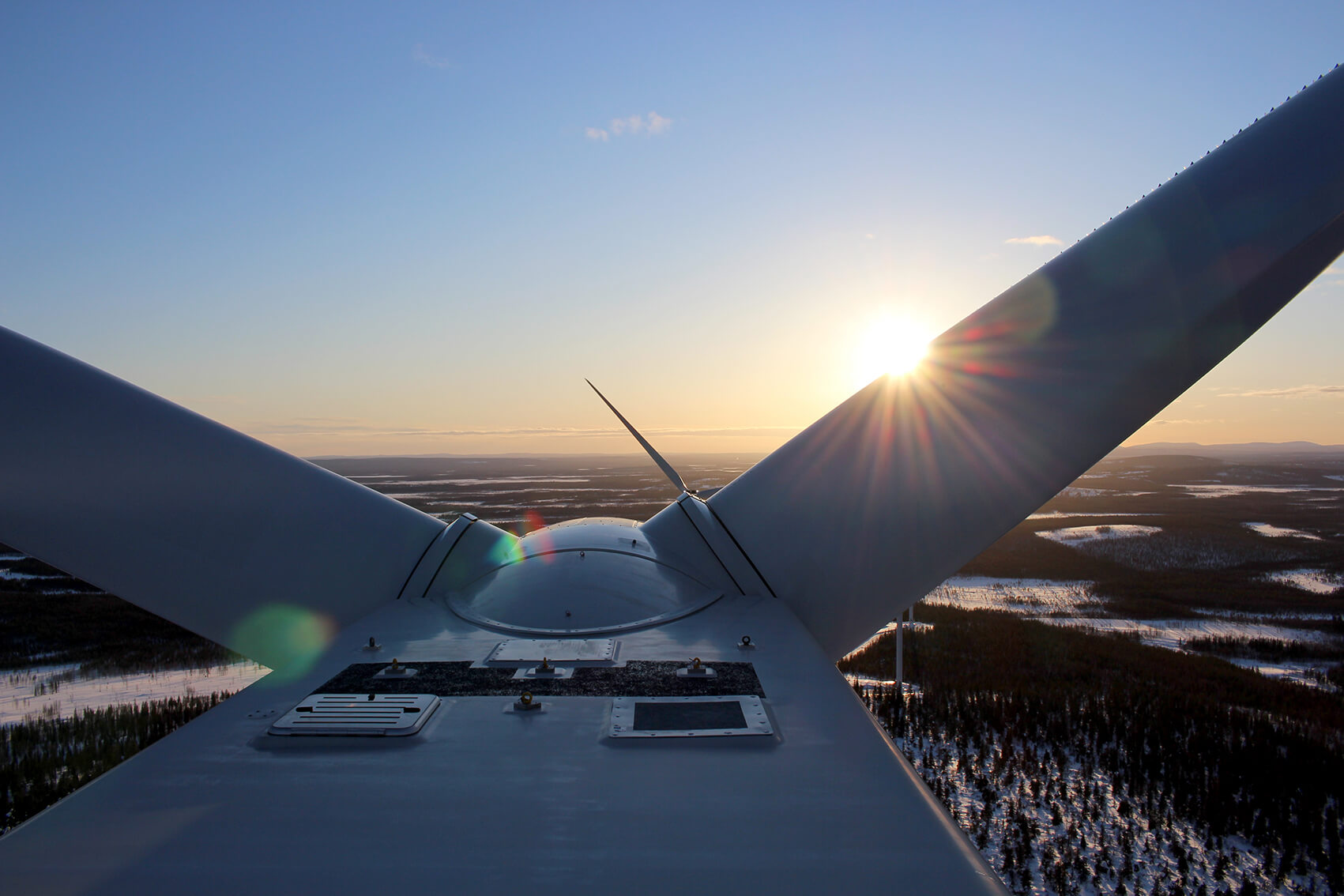Feasibility study
The purpose of the feasibility study phase is:
- to find a suitable site for wind turbines
- preliminary assessment of the technical, economic, environmental and land-use conditions for project implementation
The project is based on the feasibility study. The study starts off with finding a suitable location (wind conditions, infrastructure, land use, environment), in which case a few sites that are interesting on the basis of the map are compared with each other. The second starting point of the feasibility study is the assessment of the technical, economic and land-use conditions for implementation. This assessment is drawn up for the site that is estimated to be the best on the basis of the results of the first phase. The feasibility study is usually based on a computer-assisted estimate of the wind conditions. Wind measurements at the site itself will not be carried out until at a later stage.
The failure of a project is often due to a poorly conducted feasibility study. Therefore, the feasibility study is usually carried out with care because the cost of the feasibility study is typically smaller than the loss of earnings in just one month resulting from an error of assessment.
Selection of the wind power area
When selecting the location, compromises between various factors are usually made. The windiest location is not necessarily the best because other conditions are decisive in the selection of the final location.
When seeking potential sites, the operators often use regional wind condition surveys, such as the Finnish Wind Atlas. When studying the Wind Atlas, it is worth remembering that currently the hub height of wind turbines is usually more than 150 metres, whereas the wind condition data provided by the Wind Atlas is measured at a height of 100 and 200 metres. Therefore, the Wind Atlas provides approximate estimates of windiness in different areas.
When choosing the location for wind turbines, a good guide is the report “Planning Wind Farm Construction” published by the Ministry of the Environment.
What to take into account when drawing up a more detailed plan for the location of wind turbines:
- protected areas or relics located in the planned project area or in its vicinity
- presence of birds of prey or other protected species
- distance to permanent and holiday residences determined according to noise modelling
- distance of planned wind turbines to roads
- distance required between individual turbines
- optimisation of production – differences in wind conditions in the aera
- land ownership in the project area and its vicinity, and property boundaries
There are a number of different factors that determine the choice of location for wind turbines. These include:
- Wind conditions
- Options of connecting to the grid
- Residences
- Nature values
- Landowners’ attitudes towards the project
- Municipality’s attitudes towards the project
- Land use planning situation in the area

Negotiations with the landowner
In Finland, it is possible to build only in an area of which the contractor has a right of possession. For this reason, the necessary reservations for land areas are made immediately at the start of a wind power project. A land area can be purchased or leased – such as is done in most cases. At first, a land area may be subject to a lighter land use agreement. After wind measurements and other, more detailed studies of the area for its suitability have been conducted, this lighter land use agreement may be turned into a lease agreement or an agreement for compensation of limited land use right.
Further information about compensation to land owners (in Finnish).
Land lease can be paid as a fixed, one-off compensation or as annual lease. The lease can also be tied to the generated energy or it can be a combination of the above. In the agreement, it is worth agreeing, for example, on the impacts of a change of generation, distribution of inheritance and other changes of ownership, as well as matters related to the end of the turbine life cycle.
Communication plays an important role
When looking for a project area, the land use situation of the area is also always established, and it is ensured at the same time that the areas are not subject to protection plans or the municipality has not planned other use for the area. There must be an excellent understanding of the progress of the permitting process and the likelihood of success already when choosing the location and during the negotiations on land acquisition in order to provide the land owner a description of the plans for taking the project forward. A responsible project operator keeps the land owner up-to-date on project development and stages throughout the project duration.
It is also possible to build wind power on state-owned land. The state-owned land and sea areas are administered by Metsähallitus, which is the authority to negotiate and agree with in relation to any building on state-owned land. Metsähallitus also carries out its own wind power project development in state-owned land and sea areas.

Wind measurement
Reliable measurement of wind conditions is an essential factor in reducing the financial risk involved in wind power projects. Before an investment decision is made, it is necessary to carry out wind measurements for one to two years in the area in order to ensure the wind conditions, mean wind velocity, turbulence, etc.
The measurement must be taken at the designed hub height of the wind turbine. Regardless of the length of the measurement period, the results for the period should always be compared with the wind velocity measured at the nearest weather stations or a nearby wind farm over the same period, as well as with the mean long-term values at these locations in order to find out whether the year during which the measurement period takes place has average, strong or weak wind conditions.